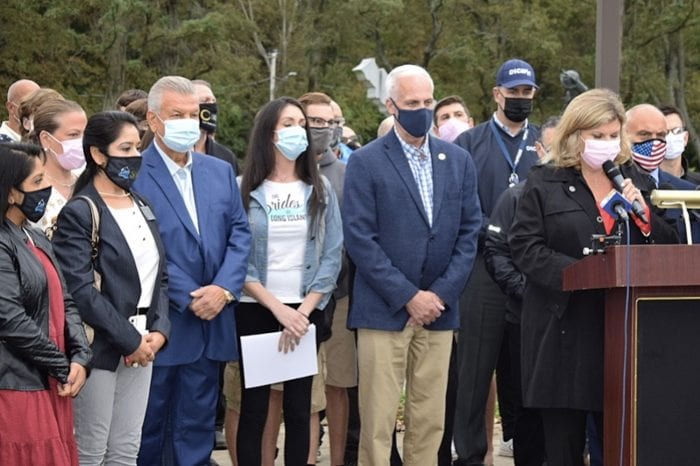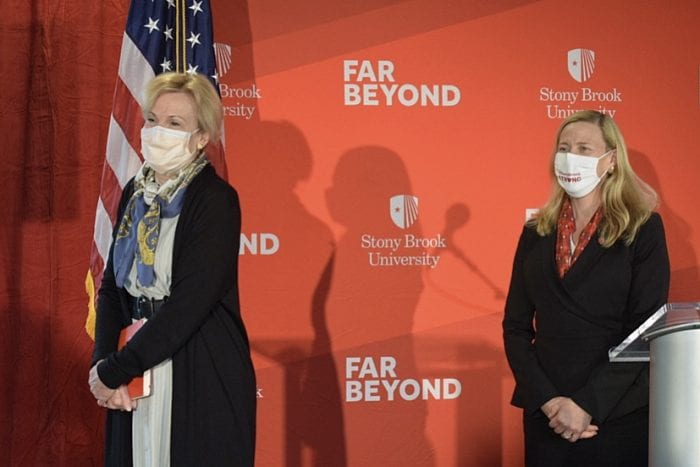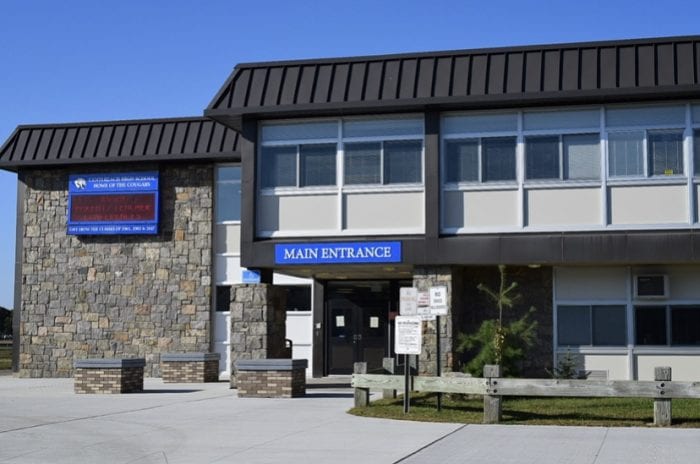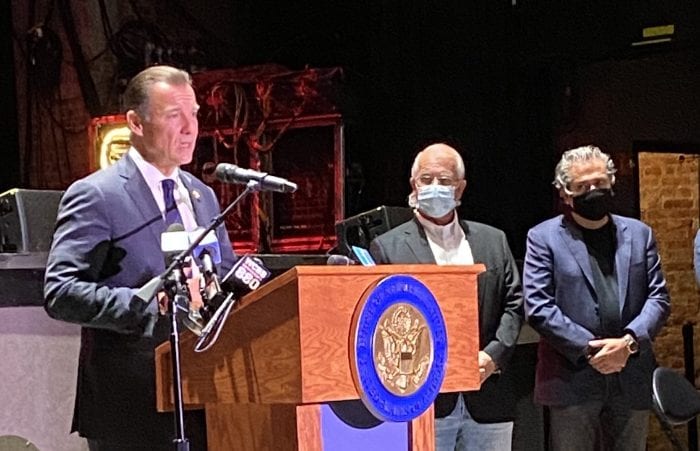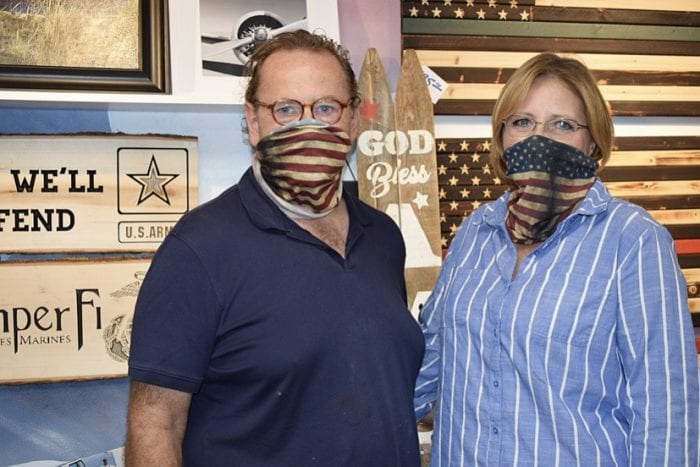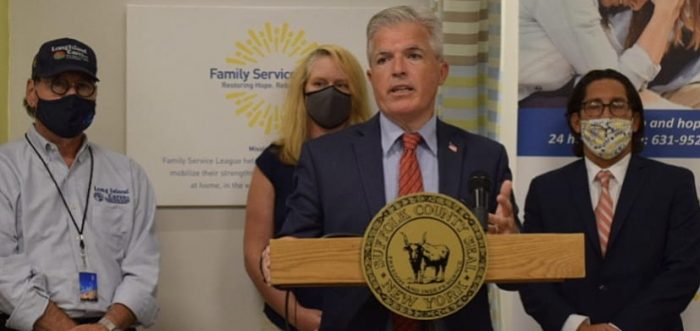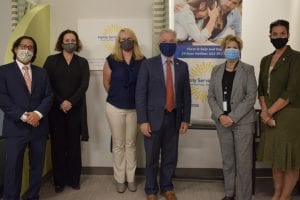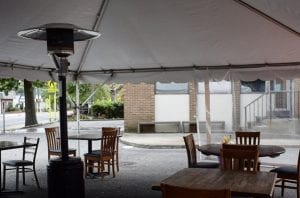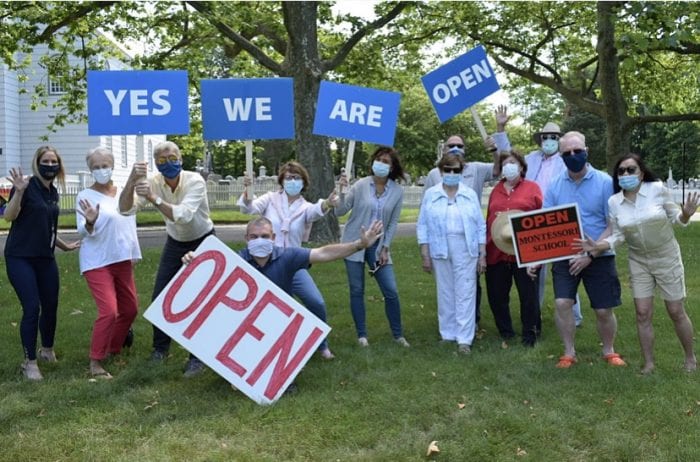The Miller Place Inn has temporarily halted wedding operations as of Oct. 9 at their banquet hall due to the COVID-19 crisis.
Donna Regina, co-owner of the Miller Place Inn, said the decision to temporarily close came after a courtesy call they received from the SLA.
“[An official] said he has orders from Albany to go to venues on Long Island and close them down if they’re not in compliance,” she said. “As of yesterday, they added no cocktail hour and at that point, it’s not a wedding. It’s not what the bride paid for.”
She said the rules are constantly changing.
“The governor tightened the noose on us,” she said. “Our capacity is 250 … Why do we have to have 50 guests?”
William Crowley, a spokesperson for the SLA, said the office received a complaint about weddings in excess of 50 people, and that an official called to warn and advise of the need to retain the 50-person limit and ensure social distancing.
He added that he reminded them there is no dancing allowed, even with masks.
Those set for weddings as early as Saturday, Oct. 17 also received the news Friday.
Selena Rodriguez, a bride from Brooklyn who was set to get married next weekend at the venue, said she got a phone call Thursday night from the Inn, saying they were shut down by the New York State Liquor Authority.
Rodriguez was told she can only postpone her wedding, but earlier in discussions she made it clear that the wedding needed to happen by the end of 2020, as her and her fiancé are moving across the country. They were planning a wedding of 40 people, well under the state’s limit.
She said because she physically cannot postpone her event, the Inn would not refund her money.
“You can’t make me have an event that I’m not going to be here for,” she said.
This comes nearly a week after a rally was held outside the H. Lee Dennison Building in Hauppauge where venue owners, wedding industry professionals, brides and elected officials begged the governor to loosen the maximum cap.
Christopher Regina, fellow co-owner of the Miller Place Inn, said they decided Thursday to temporarily halt events inside their venue because of the state’s 50-person limit.
The immediate closure decision was a “conscious one,” Donna added, because “the rules were too much to handle.”
“We cannot operate under these restrictions,” Christopher said. “When a wedding venue cannot hold at least 50 percent capacity, it’s very, very, very hard.”
Rodriguez added that her contract was “bare bones” and did not mention any clauses regarding the venue closing at their own discretion. The original call she received made it sound like the venue was claiming all venues on the island were being moderated by the state.
“They told me they got shut down by the SLA and they’re shutting everything down on Long Island,” she said.
The Miller Place Inn wanted to be clear that his venue did not close its doors permanently or lose its liquor license.
“That’s absolutely not true,” Christopher said.
Donna said that the Inn reached out to all the brides scheduled to get married up until early December.
“We told them simply we would work with you, move your date, provide out-of-house catering… We bent over backward for each bride,” she said. “We understand the brides are hurt. Their dream wedding can’t happen if they cannot get out of their seats.”
She added that claim from brides that they could not get refunds is “not true.”
“Our lawyer advised us we’re not able to refund anything within six months,” she said. “But we never punished a bride, never, so we moved eight months’ worth of weddings not to punish our brides … Every bride and groom has our cell phone numbers, anyone who knows us knows we will answer our phones.”
Caterers across the state also have filed a class-action lawsuit against Governor Andrew Cuomo saying their businesses can be just as safe, if not safer. They argue that with many venues being able to hold more than 300 people, a 50 percent cap would still allow social distancing, with guests still being able to celebrate.
“Please talk to your local government and the people in Albany,” Christopher added. “They are the ones keeping us closed.”
Its plans to reopen fully are up in the air.
“When the government revokes the 50-person cap, but that’s up to them,” he said


